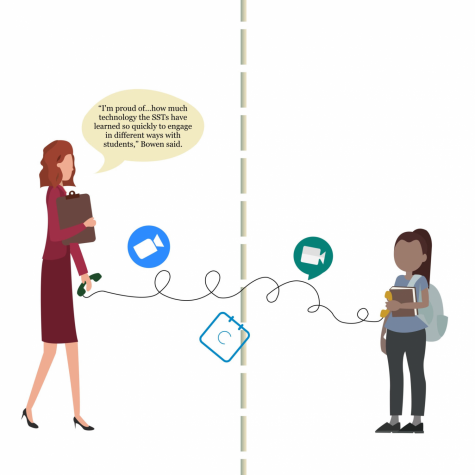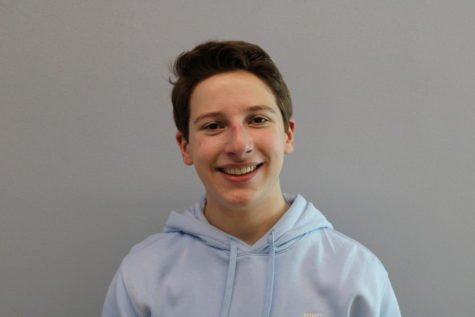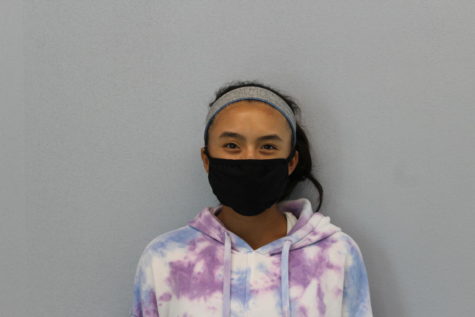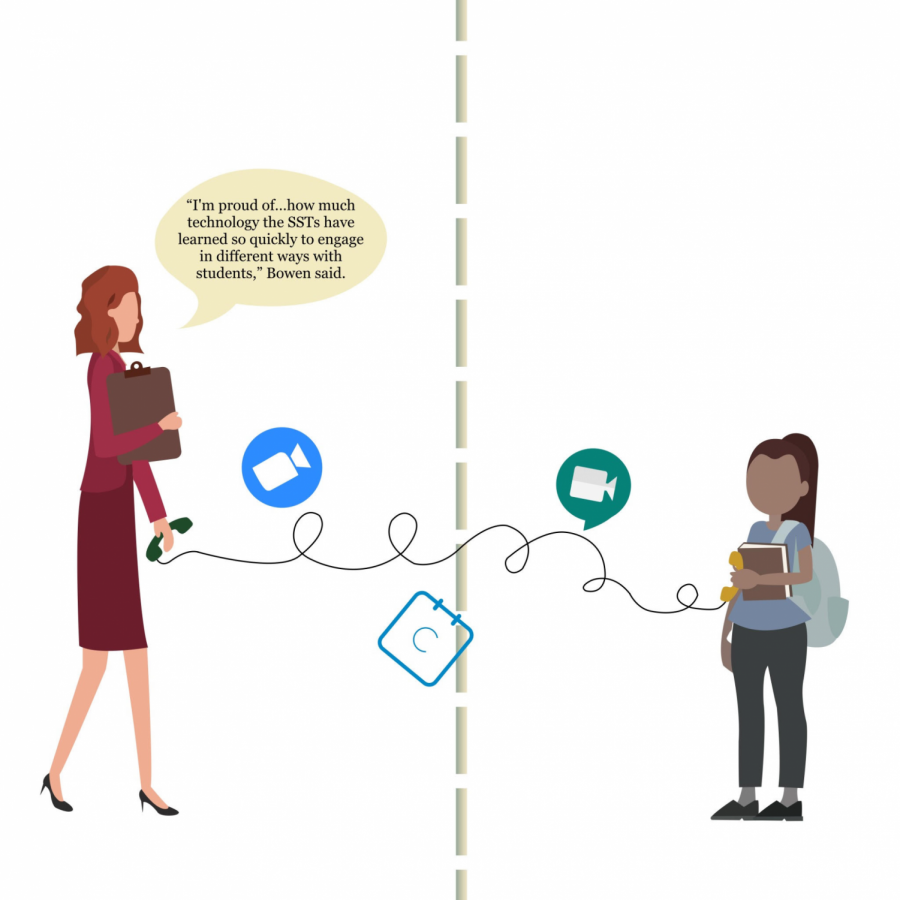Answering the Zoom Call of Duty
Student Support Teams overcome e-learning obstacles
In any other year, Student Support Team (SST) offices on the East and West sides of Stevenson’s campus would be filled with students constantly streaming in and out as the day progresses, reaching out with even the smallest of problems. Director of Student Services Sarah Bowen would spend a bulk of her time helping a variety of different students — whether that be transfer students, freshmen, or anyone having a rough day — find a sense of belonging in a sometimes intimidating school environment.
But just like most other activities, COVID-19 has moved programs and departments like the Student Support Teams and Peer Helpers online, rendering the familiar Green and Gold SST offices and student lounge abandoned and futile.
“A lot of the work of the SSTs is two things: it is to make sure that we have programs in place that help our students to manage any stress and anxiety that they’re feeling, but also to have programs in place to allow students to develop connections with each other,” Bowen said.
Just as the SSTs play a crucial role in helping to maintain the mental health of their students, Peer 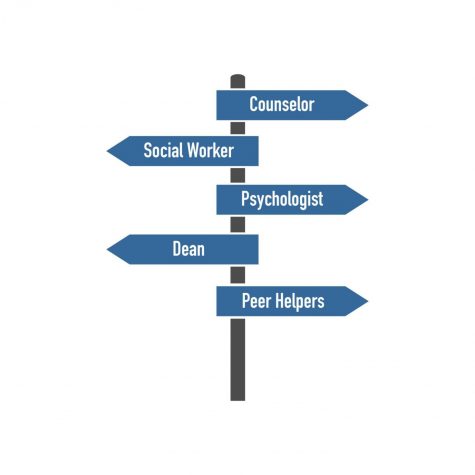 Helpers lend a hand in the process as well. Peer Helper Navya Meka ’21 describes how the online environment has proven to be a difficult setting for the program.
Helpers lend a hand in the process as well. Peer Helper Navya Meka ’21 describes how the online environment has proven to be a difficult setting for the program.
“Normally, we would have Peer Helpers [in] the student lounge, and people would come there during lunch periods,” Meka said. “But this year, we tried that out for the first couple weeks, but since people are sitting on their screens all day, nobody wants to stay on their computers any longer than they have to.”
SSTs and Peer Helpers alike have recently faced obstacles in gauging the needs of students. Adults on the SSTs feel that they have lost the opportunity to see and perceive students as they usually would on campus.
“The biggest challenge has been trying to have [a] good…sense about how our students are doing and feeling with [the pandemic and remote learning] when we’re not able to be physically present with our students in the building,” Bowen said.
Similar to the SSTs, students have also found that the online setting has created a tentativeness to initiate conversation between students and supporters. Ayzza Malik ’21 believes that SSTs are doing all they can to provide students with resources, but for students, taking the first step to ask for help is sometimes difficult.
“I think that at first, I was nervous to meet with [my SST] because it was kind of weird [since] it’s on Zoom, [and] I didn’t know if it was going to be the same as talking to them in person,” Malik said. “But they were really nice and really made sure that it was an easy transition to make it comfortable to talk about things on Zoom.”
Anxiety and intimidation were not the only emotions that Malik says students initially experience when attempting to meet with SSTs over Zoom. She mentioned that it is also more difficult for students to make a personal connection since the element of environment and face-to-face communication isn’t equivalent to the experience on campus.
Although Malik said that the online environment has made some students and herself initially more hesitant to reach out for help, when students do decide to reach out, the problems they come with are slightly different from other years. Social worker Jennifer Polisky said that some issues that have surfaced have to do with difficulty connecting with peers and teachers, as well as the uncertainty of the future.
“I think a lot of people are now dealing with different things since the start of the pandemic and during this political climate,” Polisky said. “Some people are finding they have more signs of anxiety or depression due to COVID or quarantining or changes in their lives/community. There’s increased issues around grief, a lot of family situations changing: kids that now have to work that didn’t before, kids that are doing child care, parents losing jobs. At the same time they are trying to adjust to how to learn remotely and all of this takes some getting used to and extra support.”
Even though SSTs and Peer Helpers are doing their best to provide students with the help they need during these troubling times, Meka believes there are some improvements that can be made. She said there are processes that can be implemented to help minimize the distance from their students and cultivate better relationships.
“I also think if possible, once a term, [SSTs] could set up a mandatory meeting with all their students,” Meka said. “That way, it’s less like ‘you come to us if you are having any problems’. It’s kind of hard for students to reach out and say ‘I need help,’ especially through email, and if they had a mandatory check-in, it would be much easier.”
Despite the aforementioned issues that students and staff are facing due to e-learning, Bowen believes that Stevenson has done well to adapt to the unprecedented situation. She praises the faculty and staff for their speed and perseverance using new learning tools along with their overall optimism.
“I’m proud of…how much technology the SSTs have learned so quickly to engage in different ways with students,” Bowen said. “Zoom jam boards, Calendly, all of these sorts of things that…three months ago I [didn’t] even know.”